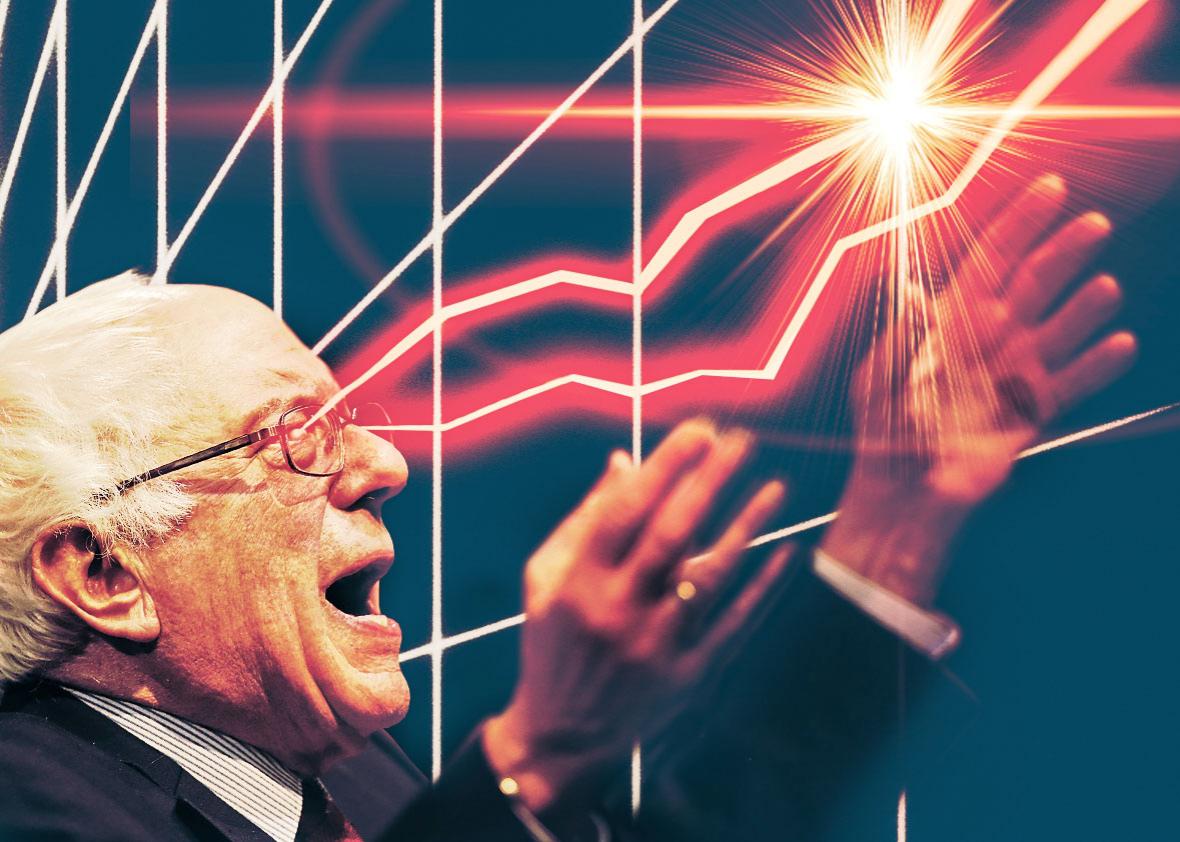Bernie Sanders has rightfully taken flak for his campaign’s willingness to promote wildly optimistic claims about how his policy ideas would supercharge the American economy. But when it comes to growth, Sanders gets at least one thing absolutely right: Even though we aren’t in a recession, the United States needs some good old-fashioned Keynesian stimulus spending right now, and dropping a gaudy sum of money to rebuild our decaying roads and bridges would be a great way to do it.
Read Sanders’ campaign platform and you’re not going to find the word “stimulus” mentioned. But you will find his plan to spend $1 trillion over five years repairing and upgrading American infrastructure—everything from broadband networks to highways to dams to drinking-water systems to rail lines. This is stimulus, without the politically toxic name. “While the economy has improved significantly since the worst days of the recession, our nation still faces a major jobs crisis,” his site states. “We need to create millions of decent paying jobs, and we need to create them now. And infrastructure spending is one of the best ways to do just that.”
The senator is spot-on. While there are some economists who seem to believe the U.S. is closing in on full employment—the perfectly balanced point where the labor market is back to full strength but isn’t yet so tight that rising wages will spark inflation—it’s a bit hard to take them seriously. To start, our low, low unemployment rate of 4.9 percent doesn’t really reflect the economy’s lingering weakness, since there are still more than 6 million adults who say they want a job but haven’t been hunting for one, so they’re technically considered to be out of the workforce. That suggests we still have plenty of room for improvement. The Congressional Budget Office, for its part, thinks the economy is currently several hundred billion dollars smaller than it would be if it were roaring at 100 percent.1
Economists call that an “output gap,” and until we close it, pumping money into infrastructure is a no-brainer, just like if we were still mired in an actual recession with shrinking GDP. Government spending should simply help the economy reach its full potential as businesses hire workers and more men and women come back to the labor market. It’s an especially good deal right now, since historically low interest rates have made it dirt cheap for the government to borrow. Though, even if credit were more expensive, borrowing might not be much of a concern: The International Monetary Fund has found that when a country’s economy is limp, public investment like infrastructure spending tends to reduce debt years down the line by stimulating growth.2
Even if the economy were closing in on full strength, there would still be a decent argument in favor of a giant public works project like what Sanders has proposed. Economists tend to worry that government doesn’t do much to encourage growth when the economy is already operating at capacity. Instead, it’s more likely to crowd out the private sector and stoke inflation. But infrastructure isn’t just any kind of public spending—again, it’s investment that helps make the economy fundamentally stronger. Building a road helps a local economy by providing construction jobs. But then afterward, like magic, businesses get a new road to use, which is good for commerce in the long term. And while groups like the IMF have found that government investment doesn’t give countries much bang for their buck during periods of high growth, others very much disagree.
Of course, there’s also a more obvious reason to spend more on our roads and bridges, no matter the economic impact: We have a lot of stuff to fix. The American Society of Civil Engineers thinks we need to spend some $3.6 trillion by 2020 to get our roads, bridges, dams, and such into shape. And while there are reasons to think their estimates are a little exaggerated, I dare anybody who has ever driven on a highway in Alabama, bumped along the BQE in Brooklyn, taken Chicago’s L, or read any coverage of Flint, Michigan’s water crisis to claim we’ve really spent all we need to repair our country’s physical plant.
Hillary Clinton, to her credit, has proposed a $275 billion infrastructure plan of her own, which itself may not even be able to pass a Republican Congress. But Sanders’ immodest infrastructure proposal may actually be better on the merits, and does a better job symbolically capturing the proper scale on which the country should be thinking. Some of his economic thinking might be a tad dicey, but not this.
1 A note for those who have been following the Gerald Friedman blog fight: Some have suggested that arguing against the idea that Sanders’ policy platform could lead to rapid, 5.3 percent annual economic growth essentially amounts to arguing against the existence of an output gap. That’s not really true. The sunny analysis of Sanders’ platform suggested he would create a massive burst of economic growth as his stimulus plan brought the economy back to its potential GDP. But then it also projects that massive, historically unusual increases in productivity and labor force participation would keep growth brisk for years more to come (also, the “fiscal multipliers” he uses in his calculations for later years seem extremely high.) It’s the combination of all those factors that made the analysis hard to swallow.
2 To get in the weeds for just a moment: The IMF does find that in countries that are inefficient about it, public-works spending tends to increase debt down the line, though by a statistically insignificant amount. It also finds no evidence that countries with high debt-to-GDP ratios before they borrow to make public investments have been penalized by the bond markets in the future, suggesting it hasn’t really been a problem.
